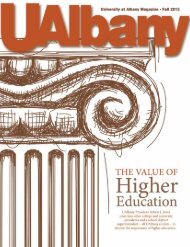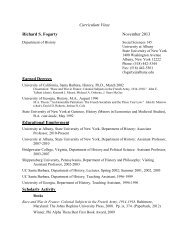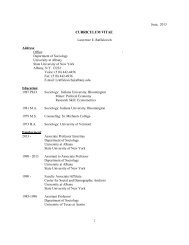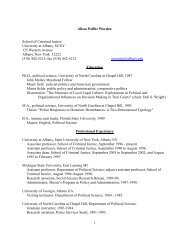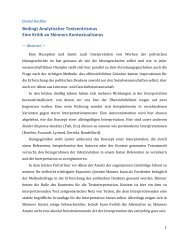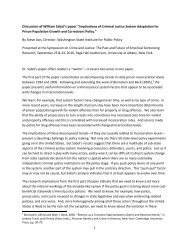Walking Corpses & Conscious Plants: Possibilist Ecologies in ...
Walking Corpses & Conscious Plants: Possibilist Ecologies in ...
Walking Corpses & Conscious Plants: Possibilist Ecologies in ...
Create successful ePaper yourself
Turn your PDF publications into a flip-book with our unique Google optimized e-Paper software.
B<strong>in</strong>gham 29<br />
Frederick Wertham prompted swift and significant changes <strong>in</strong> the content of ma<strong>in</strong>stream<br />
comics and motivated an underground movement. Wertham's book, The Seduction of the<br />
Innocent, argued that comics directly targeted children as an audience and pushed them<br />
toward del<strong>in</strong>quent habits by immers<strong>in</strong>g them <strong>in</strong> stories about crime, sex, drugs, and other<br />
vices (Tabachnick 13). The Seduction of the Innocent became a rally<strong>in</strong>g cry for<br />
concerned parents whose worries helped galvanize a Congressional <strong>in</strong>quiry <strong>in</strong>to the<br />
comics <strong>in</strong>dustry itself. 3 Rather than face the strict controls of government regulation, the<br />
Association of Comics Magaz<strong>in</strong>e Publishers or ACMP, opted for <strong>in</strong>ternal regulation and<br />
self-censorship. Though the trade group had existed s<strong>in</strong>ce 1947, the threat posed by<br />
Wertham's attack prompted re-organization <strong>in</strong>to a new entity. This group was called the<br />
Comics Magaz<strong>in</strong>e Association of America; it was responsible for the development of the<br />
Comics Code Authority which drew <strong>in</strong>spiration from the ACMP's orig<strong>in</strong>al publishers<br />
code. Members would submit their titles to the CAA who would screen the work to see if<br />
it adhered to the code; if there were no violations, the work would receive the CAA's<br />
authorization to place its seal upon the comic book's cover. Some of the restrictions of<br />
the code <strong>in</strong>cluded: “Crimes shall never be presented <strong>in</strong> such a way as to create sympathy<br />
for the crim<strong>in</strong>al, to promote distrust of the forces of law and justice, or to <strong>in</strong>spire others<br />
with a desire to imitate crim<strong>in</strong>als,” “Scenes of brutal torture, excessive and unnecessary<br />
knife and gunplay, physical agony, gory and gruesome crime shall be elim<strong>in</strong>ated,” and,<br />
“Scenes deal<strong>in</strong>g with, or <strong>in</strong>struments associated with walk<strong>in</strong>g dead, torture, vampires and<br />
vampirism, ghouls, cannibalism, and werewolfism are prohibited” (Code of the Comics<br />
Magaz<strong>in</strong>e Association of America. 26 Oct. 1954). Though these rules were <strong>in</strong>tended to<br />
preserve the moral values of youth exposed to topics presented by the genre, they also



